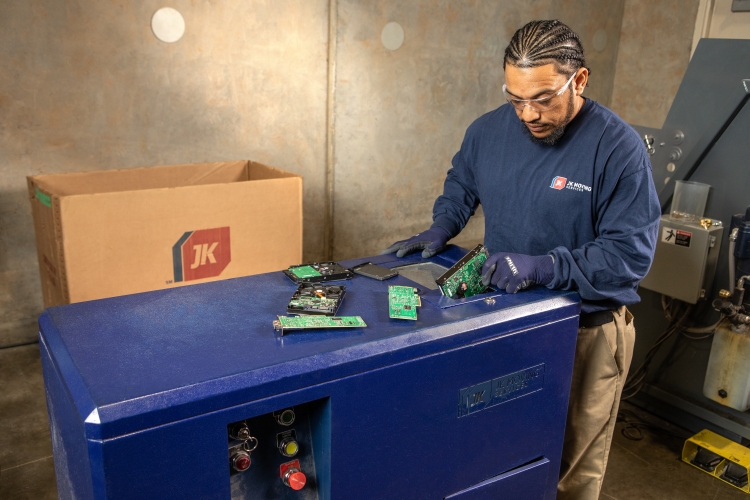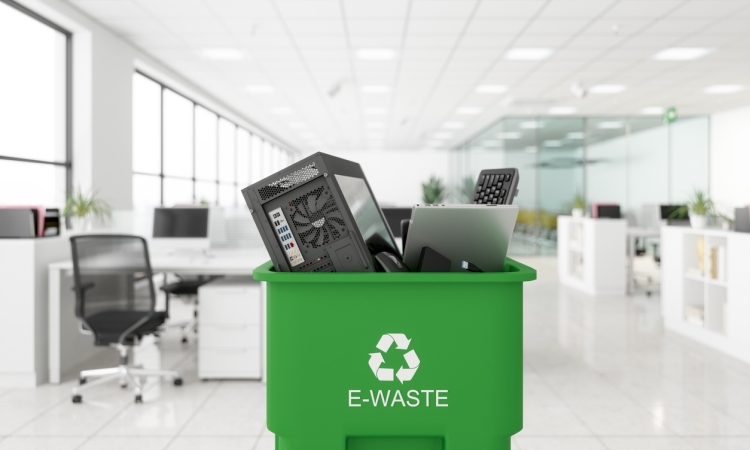It is a federal requirement to recycle IT and electronic assets upon decommissioning. As end users, companies are responsible for the safe disposal of used computer equipment to be compliant with federal data security laws such as the Bank Secrecy Act (BSA), HIPAA (Health Insurance Portability and Accountability Act), Patriot Act of 2002, Identity Theft and Assumption Deterrence Act (ITAD), and others.
Regardless of what companies plan to do with old equipment, the first step to proper disposal is to protect corporate information by removing all data from hard drives. Plenty of programs wipe hard drives, however we highly recommend using products that adhere to the U.S. Department of Defense standards for data cleansing.
How to safely and securely recycle IT assets
- Data wiping. To protect sensitive and proprietary information on an old computer, data must be permanently deleted from the hard drive. Deleting files – or even formatting the drive – isn’t enough. The files can be easily recovered by rebuilding the file directory or finding an older version of the deleted files using a backup and restore feature built into Windows. Data wiping permanently removes all data, making the disk reusable for refurbishing and resale because it leaves the drive operable.
- Degaussing. Degaussing makes media totally unusable and physically destroys the computer drive. The data on the drive is exposed to alternating magnetic fields that overwrite the original data with random patterns.
 Hard drive shredding. Whether computer equipment contains confidential and/or classified information, destroying recorded data should be a priority when preparing to refresh or renew electronic assets. Hard drive shredding literally shreds and breaks up hard drives into tiny, unusable pieces.
Hard drive shredding. Whether computer equipment contains confidential and/or classified information, destroying recorded data should be a priority when preparing to refresh or renew electronic assets. Hard drive shredding literally shreds and breaks up hard drives into tiny, unusable pieces.- IT peripheral recycling. Monitors, docking stations, copiers, back-up batteries, etc., can all be repurposed or recycled through a recycler. IT recycling is especially important because many components contain harmful chemicals. Computer monitors for example, contain lead, cadmium, and mercury. Releasing these chemicals into the air and water has been linked to serious respiratory and neuropsychological disorders.
How to ensure that IT assets are properly recycled
According to the Basel Action Network (BAN) – which focuses on issues of global e-waste – as much as 80% of “recycled electronics” end up on barges headed for other countries. To help prevent that from happening, contract with a service provider that is part of an e-Steward program.
Recycling IT assets is not only environmentally friendly but also economically beneficial. With the rapid advancement in technology, companies and individuals tend to upgrade their devices more frequently, leading to an increase in e-waste. However, with the four ways outlined in this article, it is possible to recycle IT assets and reduce the amount of electronic waste that ends up in landfills. Donating, refurbishing, reselling, or recycling IT assets can help conserve natural resources, reduce carbon emissions, and create job opportunities. JK Moving contributes to sustainable development by adopting eco-friendly practices such as recycling IT assets. Let us all take action and make a positive impact on the environment.
Start e-cycling your assets today!


